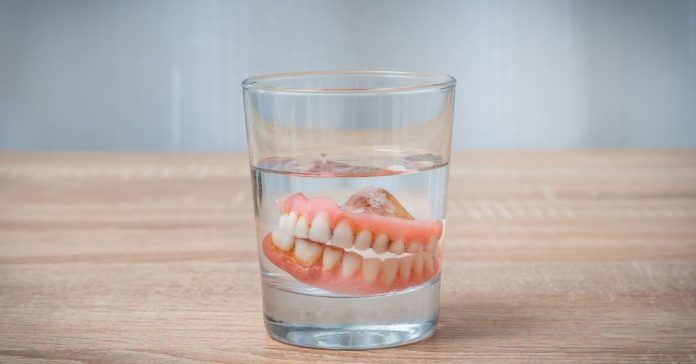False teeth or dentures are the most common choice of prosthetics for people with missing teeth. They are generally made of acrylic, nylon or metal and offer a lot of advantages if appropriately fitted. They can be used in place of a single tooth, multiple or even all your teeth.
The benefits include improved speech, better eating capabilities, prevented mouth sagging and improved self-confidence and ease.
Type of False Teeth
- Partial dentures
- Full dentures
- Removable dentures
- Flexible dentures
Partial dentures
If you still have healthy teeth, this option will work well for you. If you wish to make the procedure less obvious, you can have the fitting made in teeth-coloured material.
Full dentures
This procedure works best for those who have met with an accident or are suffering from diseases like periodontitis or any other condition where the whole set of teeth is required to be fitted. The fittings are generally not visible as they are gum-coloured material, like metal or acrylic.
Removable dentures
Removable dentures come with the added benefit of being easier to clean. They aren’t ideal if your diet includes sticky, chewy food as they may fall out of place.
Cost varies based on the quality and the aesthetic elements of the fitting. It also depends on the materials used, number of teeth, and whether you are using a single or double plate (upper and lower jaw.)
Flexible dentures
This procedure is a more popular choice as they are comfortable to wear and made with flexible and durable materials. During this procedure, translucent material is used that blends into the colour of your gums and this method doesn’t require the use of clips to hold the dentures in place.
They are less bulky and can fit in, taking very little space. This method is expensive but can last up to 5 to 8 years.
What is the process of placing False Teeth?
Following the extraction and loss of a tooth, the socket of the tooth starts to fill in with bone. The gum tissue then heals and changes shape. The entire process takes some time (a few months) until the bone and gums reach a stable shape. After this a conventional full denture is prepared, preferably about 8 to 12 weeks after the extraction or loss of the teeth from the mouth.
The process starts with taking a series of moulds/impressions of oral tissues that supports the denture. The dental laboratory will use these moulds to make models of the mouth of a patient. The laboratory technician and dentist will then start building the dentures gradually on these models. They then transfer them to the mouth of a patient at each step to ensure a proper fit, establish a proper bite and also ensure that the esthetics and appearance of the denture is desirable. Usually, the patient may have to see the dentist once per week for close to 4 – 5 weeks until the denture is complete. Then, the patient will have to come occasionally during the first month after the denture is delivered to have the adjustments made.
Increasing the lifespan of your False Teeth
Dentures need frequent cleansing and maintenance.
Your dentist will help you with the right instructions to clean your dentures. For instance, if you have partial dentures, regular removal and cleaning is the best way to maintain the dentures in a clean and hygienic fashion.
It is also dependent on the materials used to keep the dentures clean. Soaking them during the night can help maintain the dentures from drying out. It is important to remember to rinse your dentures before putting them back in place.
It might be a good idea to avoid hot beverages and chewy foods to help keep the fitting in place, untarnished.
Alternatives to consider
There are other options to consider before thinking of dentures.
If you’re thinking about dental implants please be aware that this method is permanent because of the metal rods used to keep the dentures in place. Implants are expensive though.
You can consider going with veneers if you wish for an aesthetically more pleasing set of teeth. You can opt for this procedure if you wish to cover your existing teeth with a thin coating of porcelain over the front teeth. This procedure, however doesn’t work for missing teeth.
You can also opt for Bridges. This procedure involves bridging the gap between teeth with false teeth and a dental crown that fits in with the neighboring teeth or prosthetics.


















